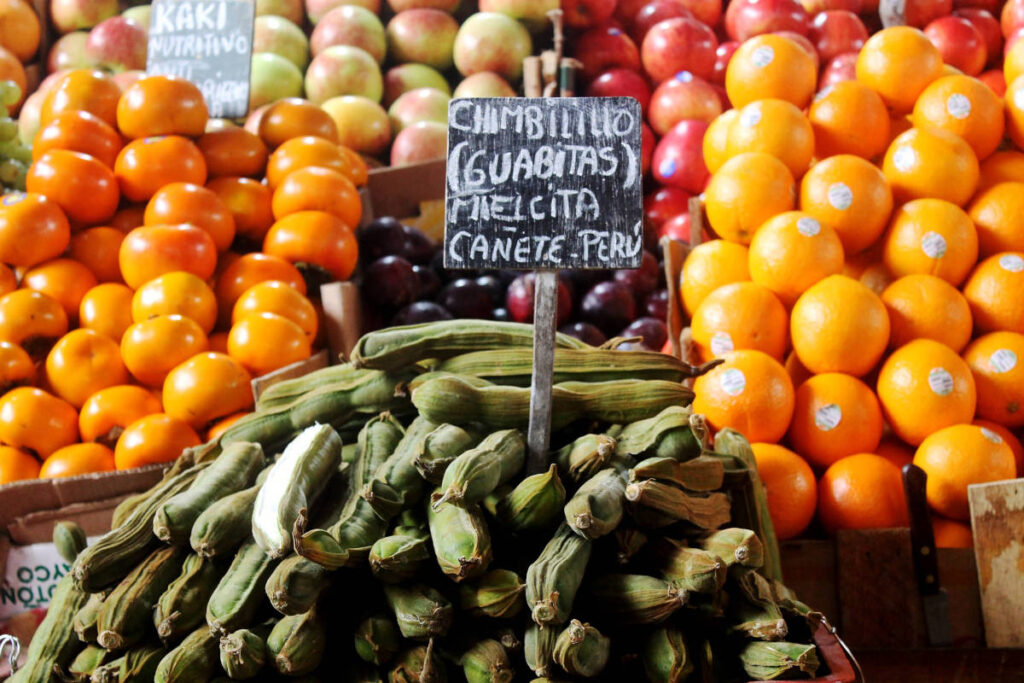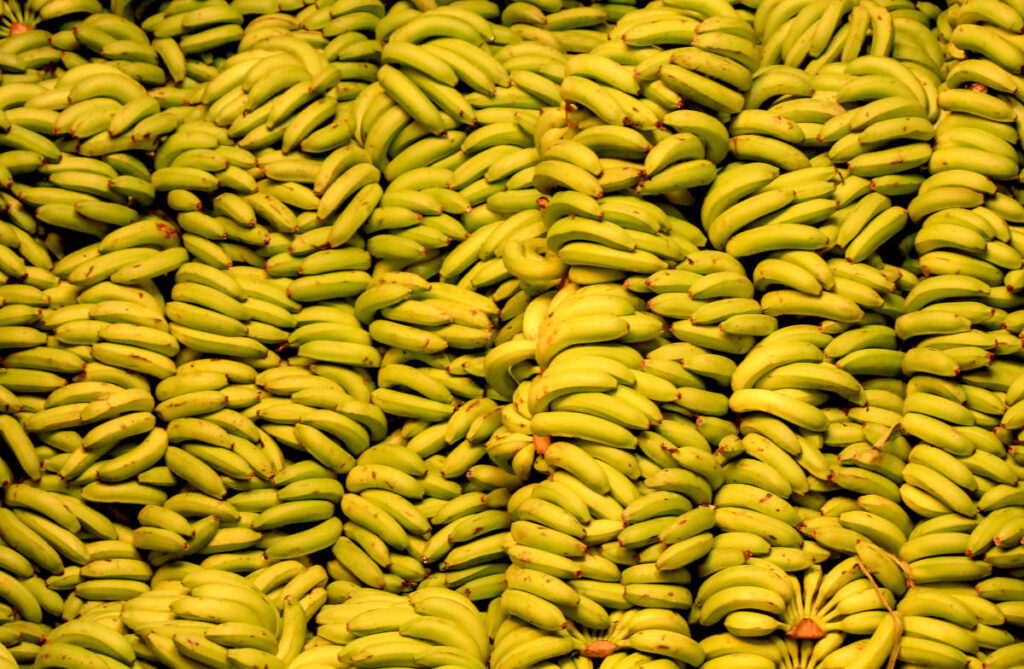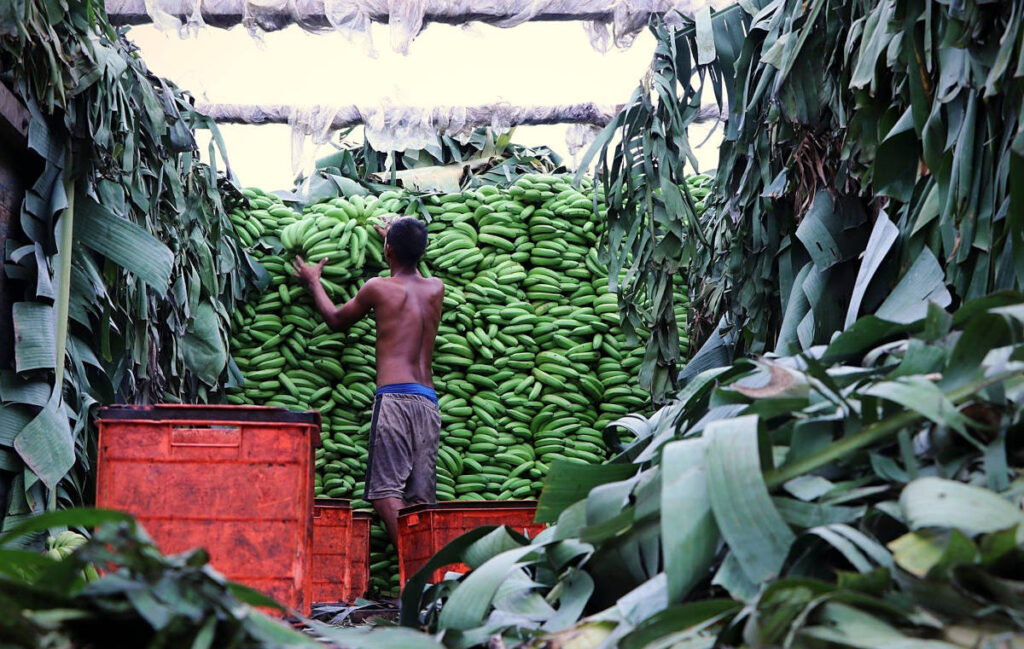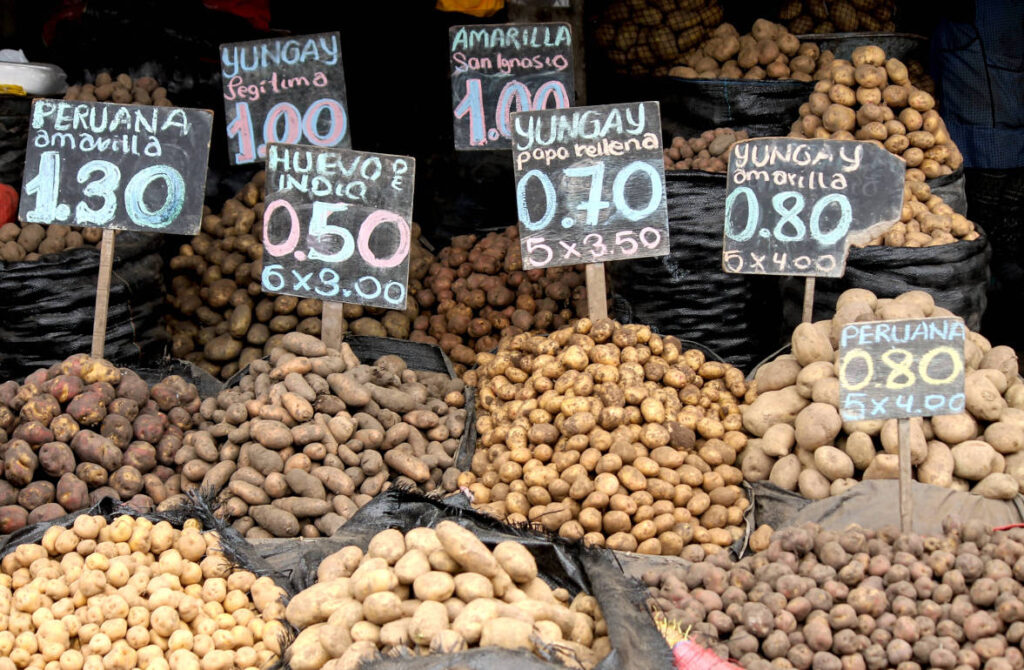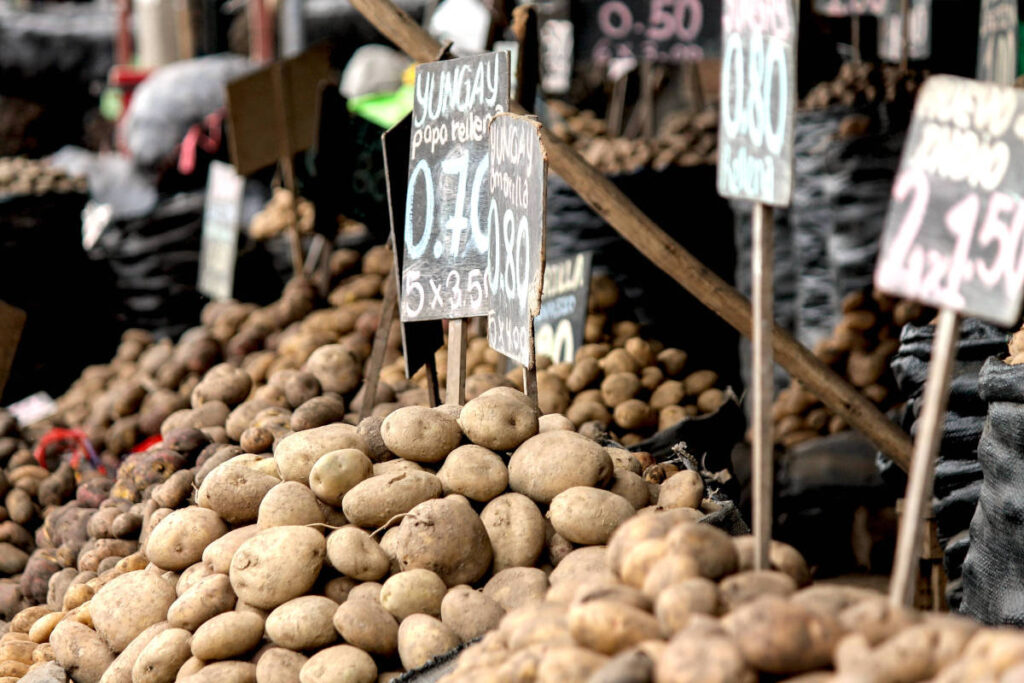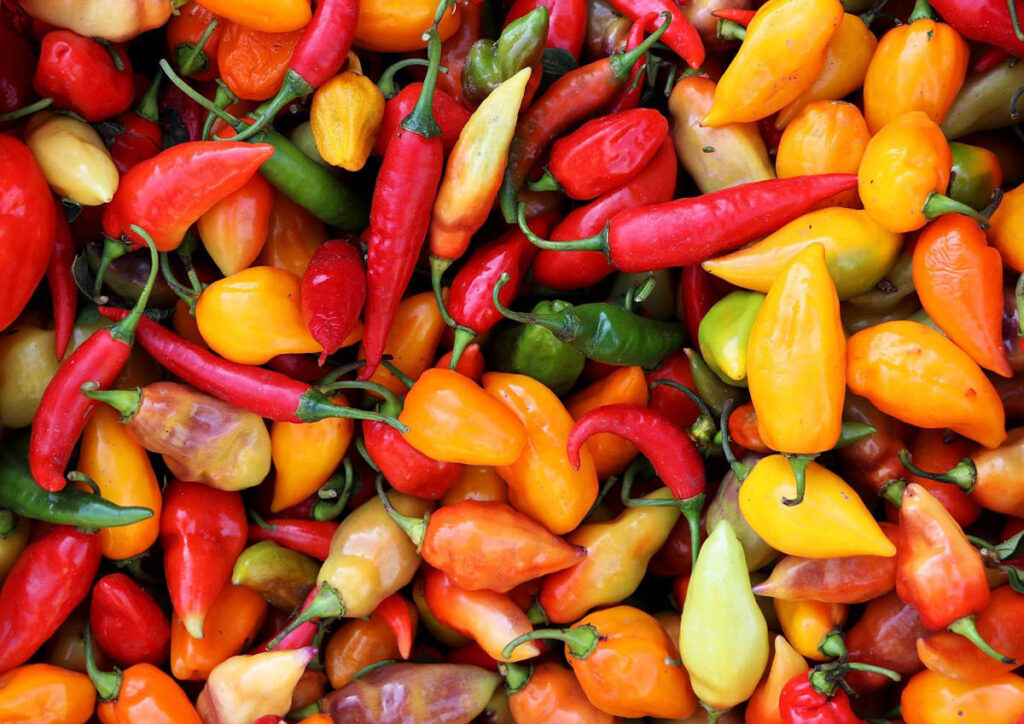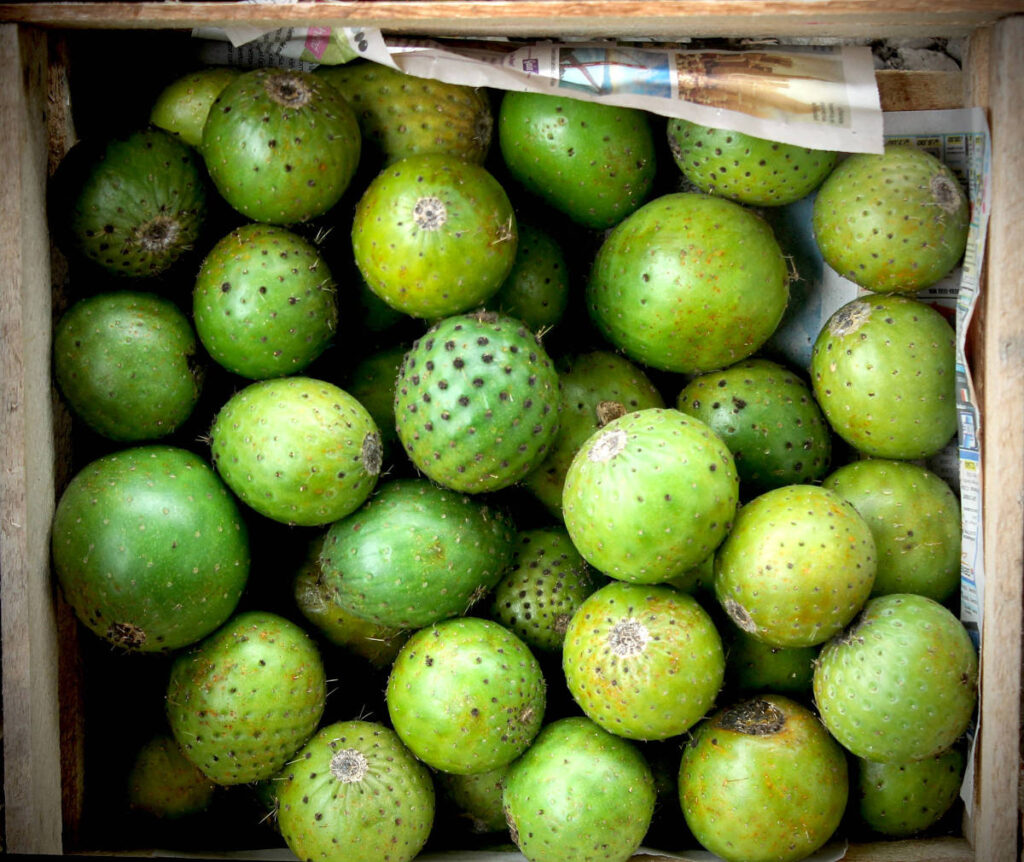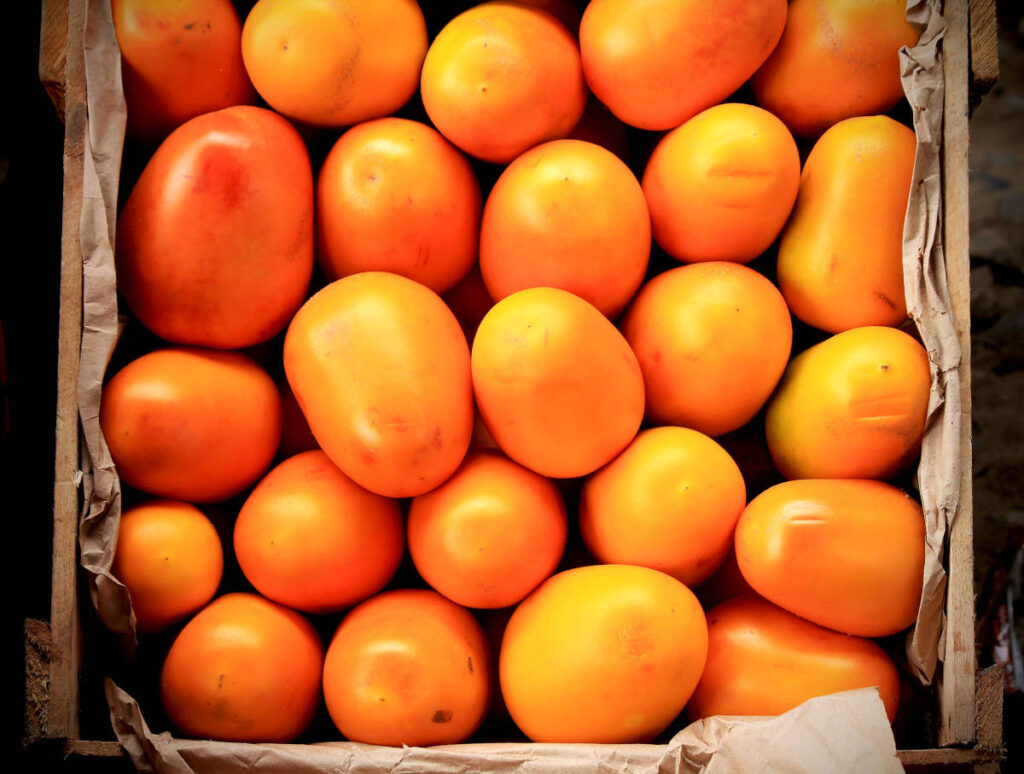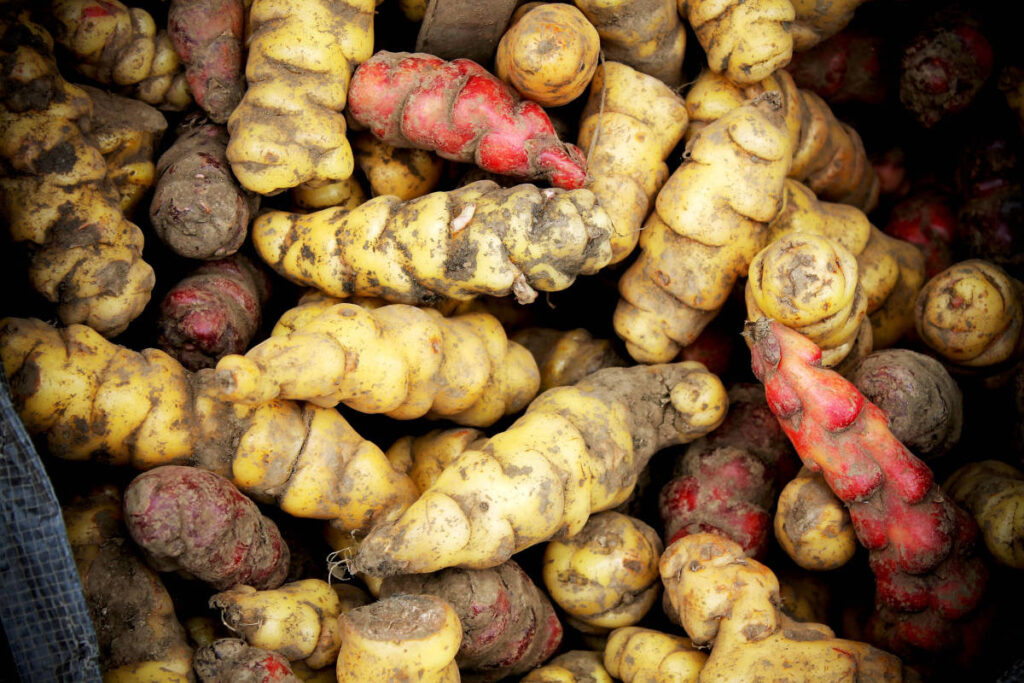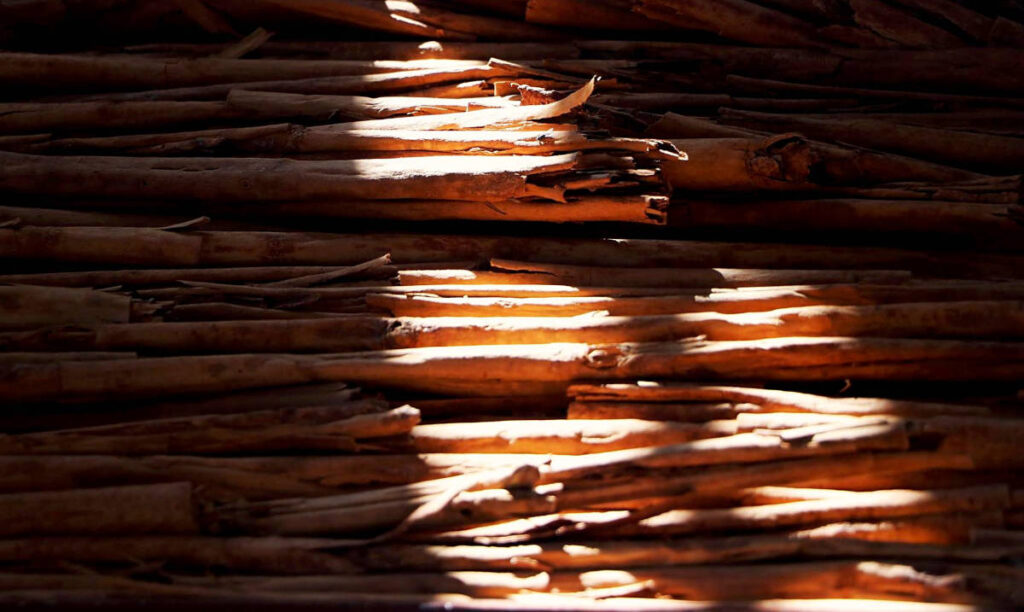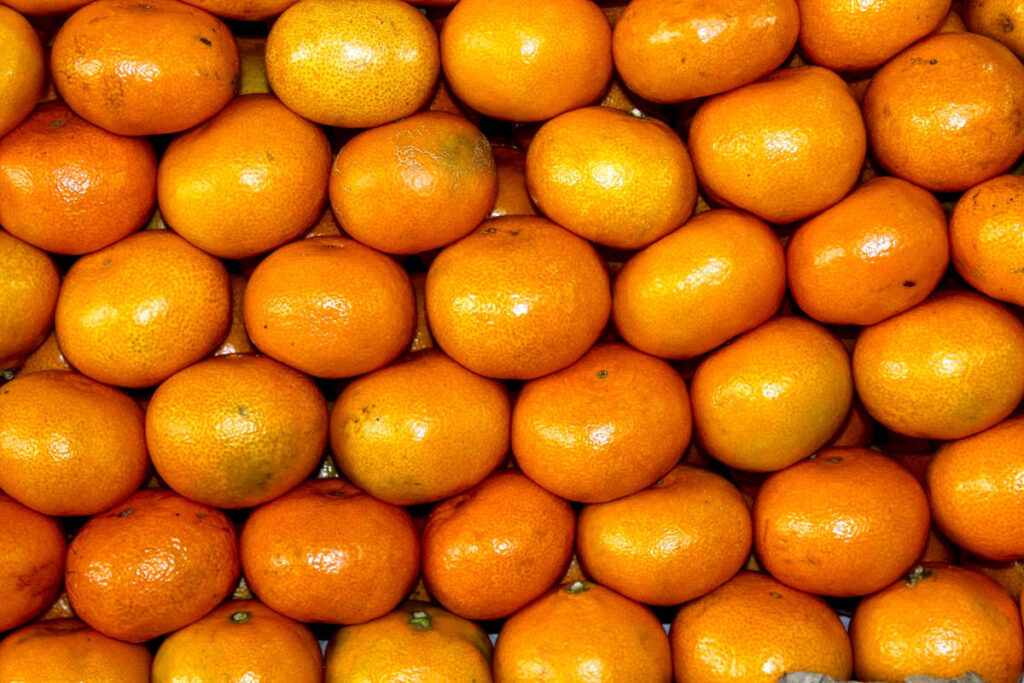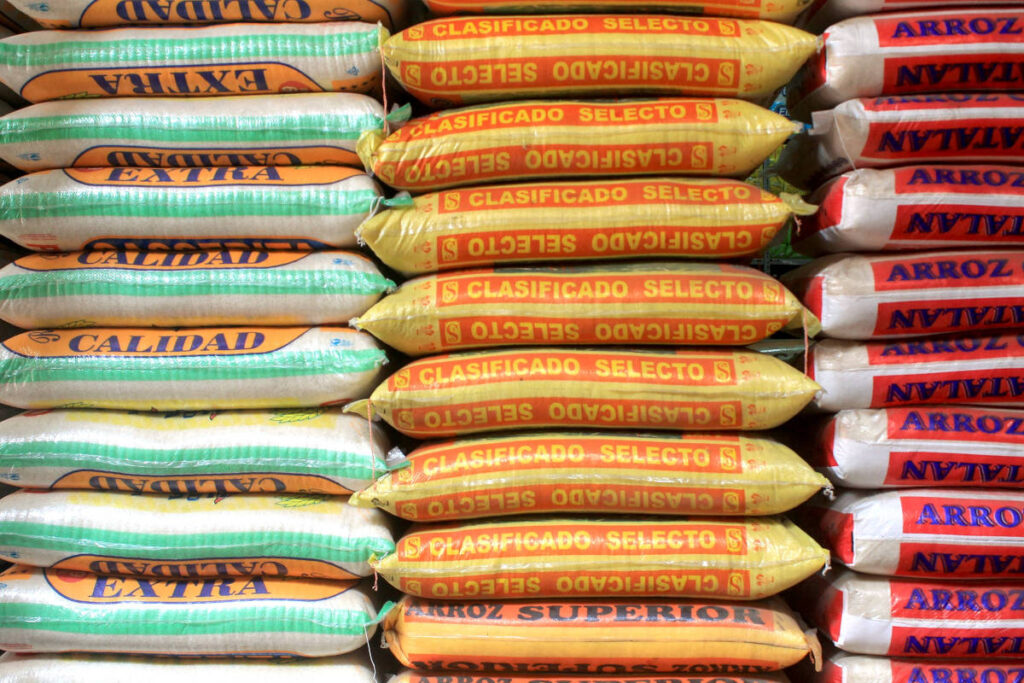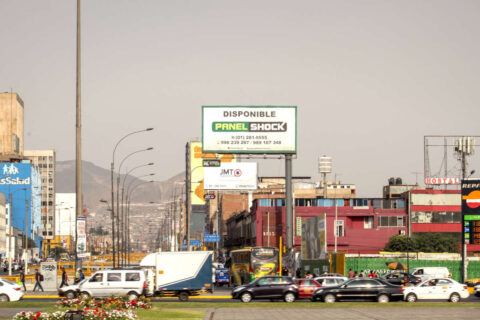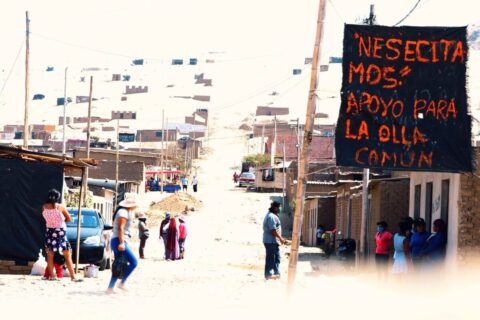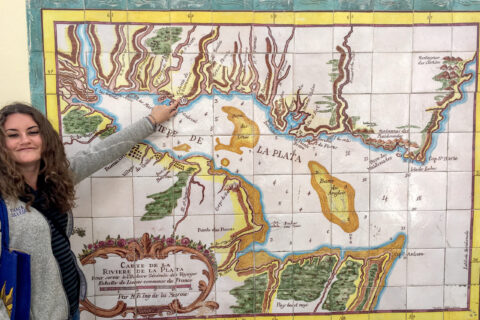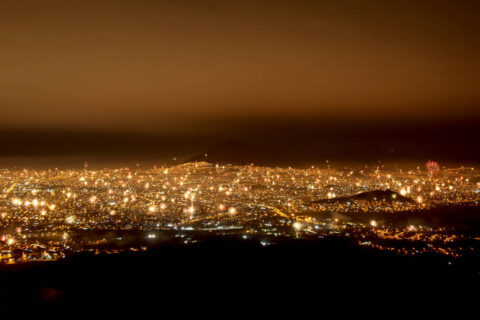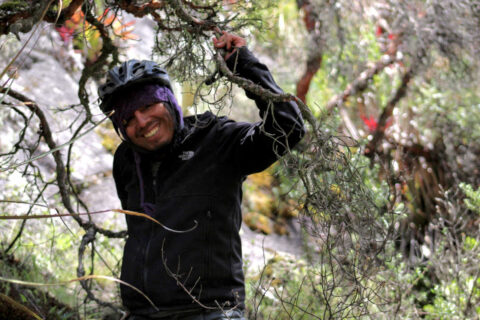The first street market I went to in Peru was Mayorista, found if you make your way down Avenida Los Incas in Trujillo.
On assignment as an intern for a startup, the market visit was prompted by my then-boss, who I was living with at the time in an apartment off Yupanqui. Looking back, I’m rather certain the assignment came as the result of my steadfast insistence on spending the majority of my time working, confined within the apartment.
At the start of my first visit to Peru, I fell into an unfortunately common trope of my existence—I was, at least, slightly anxious (understatement) and overwhelmed by this new experience. New country, new culture, different language. It was a lot. Wandering the streets here as a lone, confused gringa was an intimidating prospect to me.
The directions I was given to get to Mayorista were something as follows: Go outside to the street, take a right, walk to Los Incas. When you get to Los Incas, take another right. Then walk until you see the colorful umbrellas.
So, despite the anxiety, and eager to impress my new boss, that’s what I did. I walked out of the apartment, to Yupanqui, took the right, got to Los Incas — another right. And then I walked, and I walked, and I walked some more. Throughout the walking, I kept my eyes peeled, diligently on the lookout for the colorful umbrellas. Where were those umbrellas?
At last! I spotted some. There were a couple down a side street. The directions hadn’t included any side streets… surely but a minor oversight! I made my way over to them anyway.
At the umbrellas there were just a couple of vendors selling fruit, nothing unusual to see along the streets of Peru even after you’ve been there for a limited amount of time. It was clear I hadn’t quite found the market yet.
What compelled me to continue to make my way down this side street, I couldn’t tell you, but I did. In doing so I found myself, all of a sudden, on a busy, crowded street. There were people everywhere and vendors selling clothes. So many clothes. Hundreds of vendors, thousands of articles of clothing, so many people.
But GODDAMIT! Where was the food?!
I continued on down this hectic street and, before long, found myself wandering into a somewhat promising looking building. It was all a whirlwind from there. Stalls with vibrant assortments of fresh produce — fruits, veggies, and more. The crisp smells of herbs, the earthiness of potatoes and yucca, the irresistible sweetness of the fruits. There was a section entirely devoted to selling meat — chicken, beef, pork, all being butchered to order right there on the spot, the odd smell of the meat permeating the air. It was a cacophony of sights, scents, sounds, smells, and tastes. Some good, some bad. Gritty and disorganized at times, clean and methodical at others.
And there I was amongst it all feeling, of all things, oddly emotional. A stupid grin on my face, tears welling.
It was beautiful.
Learning the Market Ways
When shopping at a large market in Peru, there’s a bit of a learning curve, to say the least. Even now, I can find shopping at the markets to be intimidating. For me, it’s a combination of a completely different shopping experience from what I’m accustomed to coupled with an unfortunate lack of Spanish language skills.
The way in which I’m accustomed to shopping is, more or less, going on a mission to the local supermarket where there is prepackaged food galore. For the most part, I go in with a meticulously thought-out list. I’m so well-acquainted with the layout of the stores that this list is generally categorized by the store’s sections: fruits & veggies, cheese, bread, fish, meats, yada yada yada. I grab the things and I get out of there. If I don’t feel like interacting with anyone, with the magic of self-service check-out, I don’t have to. I’m familiar with the process and the supermarket atmosphere; I grew up with it! No shocks there.
Walking into the markets in Peru for the first few times, or even after being away for months, can be a sensory overload — especially at a place like Trujillo’s Hermelinda.
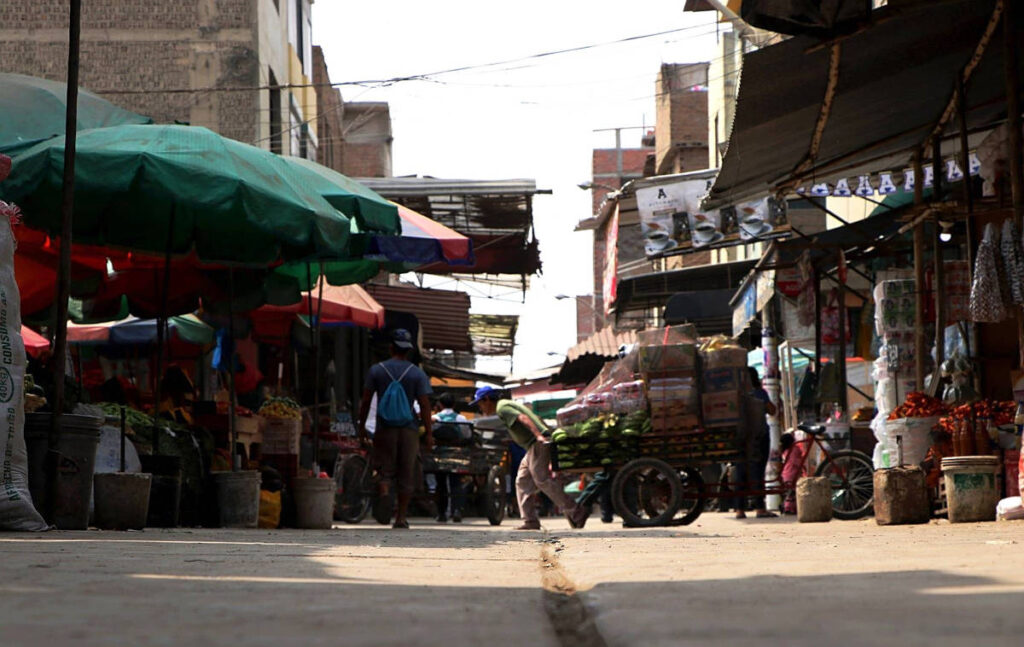
There’s a cacophony of senses — the chatter of people. Vehicles pulling in and out, dropping off products, picking stuff up. Blenders at stalls, making fresh juice. The sweet smells of fruits. The smell of rotting decay. People running around pushing wheelbarrows, a market like Hermelinda’s answer to shopping carts. Rows upon rows of fruit, neatly stacked into vibrant displays. Giant vats of olives. Partially deconstructed animals hung within view.
Rarely can a product be found in only one place; instead, you have a plethora of stalls to choose from. Pineapples here or there. Rows upon rows of mangoes. Oh look! There’s watermelon. Here’s rice, there’s rice. Flour here in prepackaged bags or buy it more in bulk over there. How to choose where to buy what?
Some of it comes down to interaction. Shopping at the market in Peru is guaranteed to involve interaction, and the interaction largely varies by vendor and what’s being sold. Some are more aggressive and in your face, chiding you to purchase their products. Others, you walk up to their stall and they’re nowhere to be found, leaving you wondering if there’s anyone tending to these potatoes at all. Some want to chat, yet others have had a long day and are ready for an afternoon nap.
The majority are kind and understanding of the foreigner who, more than likely, is completely and totally clueless and confused as to what, exactly, is going on. Am I to ask for a quarter of a kilo or a quarter of a hundred limes? Who knows?
Speaking of a kilo, the metric system hump is one which anyone who’s traveling from the US must become accustomed to quite quickly in Peru. Fun fact! Britannica has told me that there are a number of reasons why the US has not embraced metric units, from time to money to pure damn stubbornness. Nice to know as this is, it sure doesn’t help when you have to try to understand what the difference is between half a kilo versus a kilo versus two kilos or more of whatever you want to buy.
Another factor at play in choosing where and who you buy from is quality. With time you may even find that, in a city like Trujillo, you come to appreciate different markets for different purposes. We go to Mayorista to buy toilet paper in bulk because it’s closer to where we live. Hermelinda is best for ALL the fresh produce at the best prices. The cheese market has, well, some of the best cheese & butter and a lot of your health food needs, from peanut butter to nuts to spirulina powder to maca. And Mercado Central is our favorite coffee place to buy our everyday fresh ground coffee.
With time, you become acquainted with the prices, the quality and the service of the people working at the markets, and they become acquainted with you too. Awww, yes. There’s the confused gringa again with her enamorado.
With time, what was once a chaotic, confusing cacophony of sensory overload turns harmonious and orderly in its own way.
The Origins of Our Food
For the uninitiated, there’s something fascinating about watching your chicken dinner be killed in front of your eyes. It’s an experience that I’m all too often detached from.
In Hermelinda, you can watch every step of the process.
First, choose a chicken. Generally, this boils down, more or less, to the size of the chicken. Large or small?
The chickens are confined to a pen close to where the slaughter happens. Beyond the occasional squawk they are disturbingly quiet. This is either because they are resigned to their fate or are too stupid to know what’s coming. OR maybe, maybe something like Chicken Run is in process — they are meticulously plotting their escape plan, step by step. First, we need to develop the schematics for the plane — we must take into close account the parts we’ll need to assemble our plane. If we coordinate with the neighborhood rats…
Whoops. Well, if it was that chicken heading the operation, it would appear to be too late now — she is now to be beheaded.
She’s thrown on the scale — this is where you get your cost estimate for tonight’s pollo a la brasa — and then on she goes to the brief, yet efficient, chicken prep assembly line. Throat slit, thrown upside-down in a bucket to drain the blood, a brief pause then on to a tub of boiling hot water before she’s de-feathered, legs chopped off, head chopped clean. Not too much chopping, por favor — she is to be roasted in the oven!
This operation, whilst fascinating to me, is but a monotonous everyday occurrence at the market. With time, its novelty wears off and it becomes simply another way to acquire dinner. When all’s said and done, though, I can’t help but feel more connected to a chicken that I saw once living now dead and being prepped to go in the oven. Somehow, I feel more thankful for the chicken’s life and what it’s given me — a delicious dose of protein.
Experiencing this process also provides a healthy dose of humbleness — I can’t help but be impressed by those who actually know what to do with a chicken. Give me a chicken to debone for dinner and you are likely to end up with some meager scraps of meat along with bones covered in an unfortunate shredded mess. Not salvageable, unfortunately. Well, I tried.
Give me a live chicken to deal with and, well, I’m not so sure how that would turn out. If I had to venture a guess, most likely, very messy, extremely feathery. My lack of knowledge regarding any of this has turned into a type of embarrassment. It’s not due to any wrongdoing on my part, yet I can’t help but feel insufficient.
Set this aside, a market like Hermelinda allows you to experience and appreciate food on a completely different level. From processes that you’ve never seen nor been a part of, to mind-boggling assortments of products from around the country, and the world, it leaves you, at once, completely overwhelmed and entirely exhilarated.
Take Hermelinda’s banana hall, for example.
The banana hall is exactly what it sounds like — it’s a hall that’s filled entirely with bananas. As if the vast quantity of bananas in this contained space isn’t already enough, the effect is magnified by a vibrant yellow roof that covers the hall, blanketing everything beneath it in a warm, golden-y light. It’s banana heaven.
Giant trucks come to the market, loaded with the fruit, and guys jump on and off running down the hall carrying massive bunches of bananas on their backs, dropping them off at the stalls. If you’re not careful, you’ll get in the way and mess with the rhythm.
It was here that I first came to the realization that bananas come in a variety of sizes — some of our favorites are small, little bananas by “normal” USian banana standards. I also learned that there are A LOT of bananas in the world. Never before had I seen so many bananas packed into one place, a sight that never fails to raise a number of existential questions within my mind. How can there be so many bananas, in effect, so much produce, so much produced and yet so many still suffer?
The bananas are just the beginning, though.
In Peru, there are over 4,000 varieties of potatoes. That’s a hell of a lot of potatoes. One can begin to comprehend the variety at Hermelinda. Whereas there’s a hall of bananas, there’s basically a block or two of potatoes. There are so many types and varieties of them that, throw someone like me in there, and they can be left entirely confused and speechless. Some are best for papas fritas, others for causa, others to go with your ceviche. These are from here, those are from there. Where to begin?
Seeing this vast variety of potatoes converged in one place is just the tip of the iceberg, and it makes it all the more ironic when one encounters stories such as that of the import of thousands of tons of the root vegetable from countries as far away as the Netherlands and Belgium. Attributed to the growing fast food industry, occurrences like these are placing undue strain on the farmers working within the country and it’s but another reason to appreciate the market for what it is — a place where more local products can thrive, where prices are, more often than not, second-to-none.
At the market, you can’t help but be faced with a healthy dose of the reality of where your food is coming from and what it took to get it there, whether it’s due to the labels on the potatoes, watching the unloading of the banana trucks, or the selection and slaughter of a chicken.
It’s a place where you can find an array of products that are largely coming from around the country and the world. Fruits from the Amazon, potatoes and cheese from the highlands, fish from the coastline, specialty products shipped in for food fusions like Chifa. Couple this with prices that are second-to-none and, with a little research beforehand, you can give yourself a little culinary tour of the country right within the market itself with little in the way of financial commitment required.
In the market, there are endless opportunities to see, smell, and taste new things. It’s here you can start to discover the foods of Peru, where they’re coming from and their place in the history that makes Peru the country it is.
What Makes a Market Beautiful?
The market, at first glance, is not necessarily a place which, when asked to describe, one’s initial thought would be to say it’s beautiful. There are parts of the market which, quite frankly, one could consider to be the opposite of beautiful.
There’s waste and decay, rotting food, fish that’s maybe been out just a bit too long in the early afternoon. There are scroungy street dogs, annoying flies, smells which, upon consideration, you maybe wish you didn’t know about. Bits of fruit smashed into the dirt, puddles of who-knows-what, dripping blood and guts.
There’s also the perfumed scent of fresh mango, pineapple, strawberries, blueberries… a huge variety of fresh fruits, piles upon piles of them, stacked into beautiful rows, just a small part of a rich array of colors and textures that make up the market experience.
There’s the scent of familiar and not-so-familiar herbs — basil, cilantro, hierba buena, huacatay. There are giant stacks of rice and dried goods. There are potatoes. So. Many. Potatoes.
There’s, more likely than not, a lot of what you’re looking for and a lot of what you’ve never even heard of.
There are trucks filled with onions and chickens and whatever else you can think of. There’s fresh garlic and tea.
Beauty, ugliness; chaos, order; the novel, the mundane. As with a lot of things in life, it’s a matter of perspective. The more you go to the market, the more you discover, the more you can see. You may find more ugliness, or more beauty, or a hybrid of the two. What’s happening can seem like total chaos or can fall into place into a new type of undiscovered order. Something that was new one day can become mundane the next.
Take the market as you will, what makes it beautiful to me is when all of the little components, however they may be, whatever my mood that day may be, merge to become a whole. The convergence of products from here and there and people going about their daily lives. Of processes, both familiar and unfamiliar. Of something that’s mundane to one and novel to another.
A market can truly be a window into the soul of a place and, regardless of what’s in the details, there’s something beautiful to be said for that.


